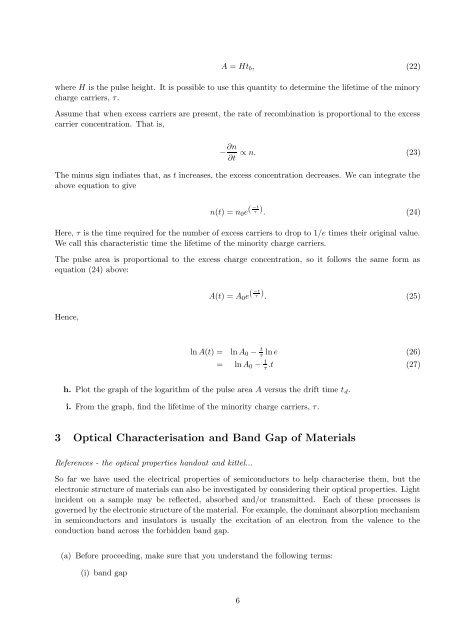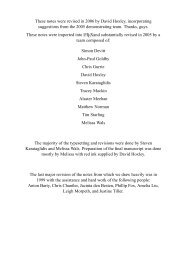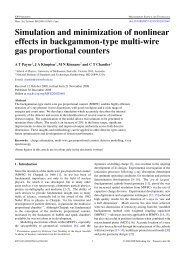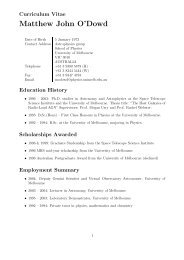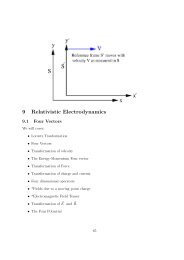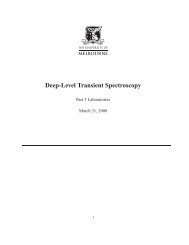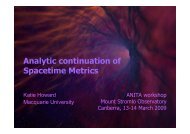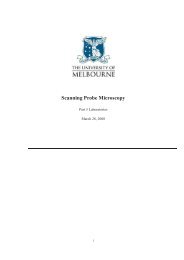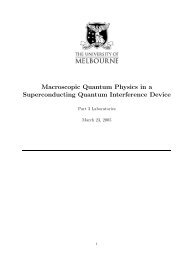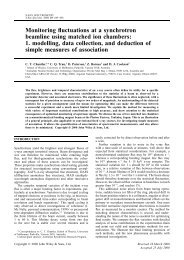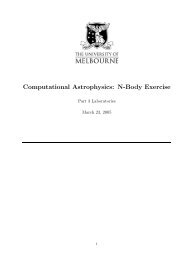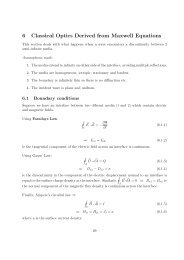1 Introduction 2 The Haynes-Shockley Experiment
1 Introduction 2 The Haynes-Shockley Experiment
1 Introduction 2 The Haynes-Shockley Experiment
Create successful ePaper yourself
Turn your PDF publications into a flip-book with our unique Google optimized e-Paper software.
A = Ht b , (22)<br />
where H is the pulse height. It is possible to use this quantity to determine the lifetime of the minory<br />
charge carriers, τ.<br />
Assume that when excess carriers are present, the rate of recombination is proportional to the excess<br />
carrier concentration. That is,<br />
− ∂n<br />
∂t<br />
∝ n. (23)<br />
<strong>The</strong> minus sign indiates that, as t increases, the excess concentration decreases. We can integrate the<br />
above equation to give<br />
n(t) = n 0 e ( −t<br />
τ<br />
) . (24)<br />
Here, τ is the time required for the number of excess carriers to drop to 1/e times their original value.<br />
We call this characteristic time the lifetime of the minority charge carriers.<br />
<strong>The</strong> pulse area is proportional to the excess charge concentration, so it follows the same form as<br />
equation (24) above:<br />
Hence,<br />
A(t) = A 0 e ( −t<br />
τ<br />
) . (25)<br />
ln A(t) = ln A 0 − t τ<br />
ln e (26)<br />
= ln A 0 − 1 τ<br />
.t (27)<br />
h. Plot the graph of the logarithm of the pulse area A versus the drift time t d .<br />
i. From the graph, find the lifetime of the minority charge carriers, τ.<br />
3 Optical Characterisation and Band Gap of Materials<br />
References - the optical properties handout and kittel...<br />
So far we have used the electrical properties of semiconductors to help characterise them, but the<br />
electronic structure of materials can also be investigated by considering their optical properties. Light<br />
incident on a sample may be reflected, absorbed and/or transmitted. Each of these processes is<br />
governed by the electronic structure of the material. For example, the dominant absorption mechanism<br />
in semiconductors and insulators is usually the excitation of an electron from the valence to the<br />
conduction band across the forbidden band gap.<br />
(a) Before proceeding, make sure that you understand the following terms:<br />
(i) band gap<br />
6


